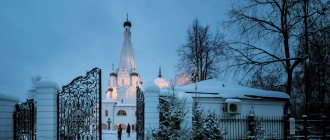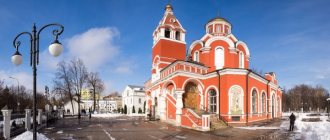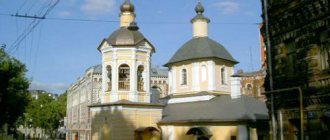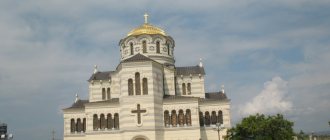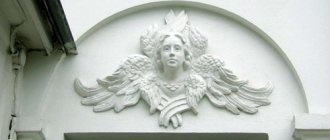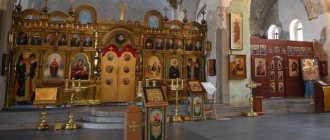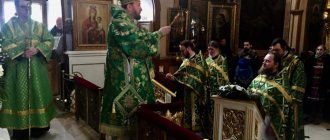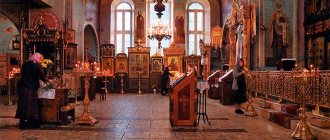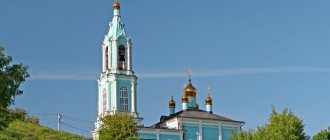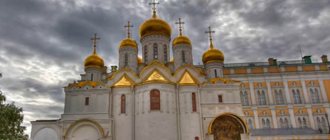Mir
Russia Moscow Church of the Intercession of the Virgin Mary in Izmailovo (Moscow) Map is loading...
{"format":"leaflet","minzoom":false,"maxzoom":false,"limit":50,"offset":0,"link":"all","sort":[""], "order":[],"headers":"show","mainlabel":"","intro":"","outro":"","searchlabel":"\u2026 \u0441\u043b\u0435\ u0434\u0443\u044e\u0449\u0438\u0435 \u0440\u0435\u0437\u0443\u043b\u044c\u0442\u0430\u0442\u044b","default":"","import-annotation":false,"width ":"auto","height":"350px","centre":{"text":"","title":"""link":"","lat":55.79122199999999764941094326786696910858154296875,"lon": 37.76480600000000009686118573881685733795166015625,"icon":""},"title":"","label":"","icon":"","lines":[],"polygons":[],"circles":[ ],"rectangles":[],"copycoords":false,"static":false,"zoom":8,"defzoom":14,"layers":["OpenStreetMap"],"image layers":[] ,"overlays":[],"resizable":false,"fullscreen":true,"scrollwheelzoom":true,"cluster":false,"clustermaxzoom":9,"clusterzoomonclick":true,"clustermaxradius":80, "clusterspiderfy":true,"geojson":"","clicktarget":"","showtitle":true,"hidenamespace":false,"template":"","userparam":"","activeicon": "","pagelabel":false,"ajaxcoordproperty":"","ajaxquery":"","locations":[{"text":"\u003Cb\u003E\u003Ca href=\"/palomnik/%D0% A5%D1%80%D0%B0%D0%BC_%D0%9F%D0%BE%D0%BA%D1%80%D0%BE%D0%B2%D0%B0_%D0%91%D0%BE% D0%B3%D0%BE%D1%80%D0%BE%D0%B4%D0%B8%D1%86%D1%8B_%D0%B2_%D0%98%D0%B7%D0%BC%D0% B0%D0%B9%D0%BB%D0%BE%D0%B2%D0%BE_(%D0%9C%D0%BE%D1%81%D0%BA%D0%B2%D0%B0)\" title =\»\u0425\u0440\u0430\u043c \u041f\u043e\u043a\u0440\u043e\u0432\u0430 \u0411\u043e\u0433\u043e\u0440\u043e\u0434\u0438\u044 6\u044b\u0432\u0418\ u0437\u043c\u0430\u0439\u043b\u043e\u0432\u043e (\u041c\u043e\u0441\u043a\u0432\u0430)\»\u003E\u0425\u0440\u0430\u043c\u041f \u043e\u043a\u0440\ u043e\u0432\u0430 \u0411\u043e\u0433\u043e\u0440\u043e\u0434\u0438\u0446\u044b \u0432 \u0418\u0437\u043c\u0430\u0439\u043b\u 043e\u0432\u043e (\u041c\u043e \u0441\u043a\u0432\u0430)\u003C/a\u003E\u003C/b\u003E\u003Chr /\u003E\u003Ca href=\"/palomnik/%D0%A1%D0%B2%D0%BE%D0% B9%D1%81%D1%82%D0%B2%D0%BE:%D0%90%D0%BD%D0%BD%D0%BE%D1%82%D0%B0%D1%86%D0%B8 %D1%8F\» title=\»\u0421\u0432\u043e\u0439\u0441\u0442\u0432\u043e:\u0410\u043d\u043d\u043e\u0442\u0430\u0446\u0438\u044f\»\u003E\ u0410\u043d\u043d\u043e\u0442\u0430\u0446\u0438\u044f\u003C/a\u003E: »'\u0425\u0440\u0430\u043c \u041f\u043e\u043a\u0440\u04 3e\u0432\u0430\u041f \u0440\u0435\u0441\u0432\u044f\u0442\u043e\u0439 \u0411\u043e\u0433\u043e\u0440\u043e\u0434\u0438\u0446\u044b \u0432 \u0418 \u0437\u043c\u0430\u0439\u043b '' 3c\u0420\u043e\u0436\u0434 > 044f\u041c\u043e\u0441\u043a \u043e\u0432\u0441\u043a\u043e\u0439 \u0433\u043e\u0440\u043e\u0434\u0441\u043a\u043e\u0439 \u0435\u043f\u0430\u0440\u0445\ u0438\u0438. \u0425\u0440\u0430\u043c \u0440\u0430\u0441\u043f\u043e\u043b\u043e\u0436\u0435\u043d \u0432 \u0440\u0430\u0439\u043e\u043d \u0435\u0418\u0437\u043c\u0430 \u0439\u043b\u043e\u0432\u043e \u0433\u043e\u0440\u043e\u0434\u0430 \u041c\u043e\u0441\u043a\u0432\u044b (\u043d\u0430 \u043 e\u0441\u0442\u0440\u043e\ u0432\u0435 \u043d\u0430 \u0421\u0435\u0440\u0435\u0431\u0440\u044f\u043d\u043e-\u0412\u0438\u043d\u043e\u0433\u0440\u0430\u 0434\u043d\u043e\u043c\u043f \u0440\u0443\u0434\u0443).,""title":"\u0425\u0440\u0430\u043c \u041f\u043e\u043a\u0440\u043e\u0432\u0430 \u0411\u043e\u0433\u043e \u0440\ u043e\u0434\u0438\u0446\u044b \u0432 \u0418\u0437\u043c\u0430\u0439\u043b\u043e\u0432\u043e (\u041c\u043e\u0441\u043a\u0432\u 0430)","link":" ","lat":55.79122199999999764941094326786696910858154296875,"lon":37.76480600000000009686118573881685733795166015625,"icon":""}],"image Layers":[]}
55.791319; 37.765067
Russia, Moscow, Eastern administrative district, Izmailovo district, Bauman town, 1
Moscow
Russia
Telephone:
Phone number of the priest on duty
A
Church of the Intercession of the Blessed Virgin Mary in Izmailovo
- Orthodox Church of the Nativity Deanery of the Moscow City Diocese. The temple is located in the Izmailovo district of Moscow (on an island on Serebryano-Vinogradny Pond).
History[edit]
At the turn of the 15th–16th centuries, a wooden church stood on the site of the Intercession Church. It was probably burned during the invasion of the Crimean Khan Devlet Giray. The new wooden three-tent temple was built by the boyar Nikita Ivanovich Romanov in the late 1610s - early 1620s.
The stone Church of the Intercession was built for the royal estate of Izmailovo under Tsars Alexei Mikhailovich and Fyodor Alekseevich. Consecrated in 1679 by Patriarch Joachim in the presence of Tsar Feodor. The three-nave monumental structure made of brick with individual white stone details is crowned with five chapters, the diameter of the central chapter is 8.5 m. The outside of the temple is decorated with outstanding multi-colored tiles (master Stepan Polubes, the “peacock eye” pattern, as well as various floral patterns). The inside of the temple has four pillars; the original interior has been lost.
After 1812 (when the temple was badly damaged by the invasion of the French, who burned bonfires in it), an almshouse for disabled people from the Patriotic War (later also other wars of the 19th century; now the Bauman Town, architect Konstantin Ton) grew up around the temple. When the almshouse was added to the walls of the cathedral, the porches adjacent to the church on the north and south sides were dismantled. In the 1840s, the iconostasis was restored. In 1854-1922, the Izmailovo list of the Jerusalem icon was kept in the Church of the Intercession (now in the Izmailovo Church of the Nativity, and in the Church of the Intercession there is a list).
During Soviet times, the church was closed along with the almshouse (since 1918); in 1928, the NKVD archive, the most valuable icons preserved from the 17th century, were housed in it. The five-tiered iconostasis disappeared. Then a fruit warehouse was placed in the temple, the iconostasis structures were destroyed, and large icons went to fruit shelves (in the 1960s, the icons that served as shelves were given to the Andrei Rublev Museum of Ancient Russian Art). In 1970-1980, the cathedral was a warehouse for the Informelektro Research Institute, then the interiors began to be reconstructed into a concert hall.
The temple has been operating again since the 1990s, and the few surviving icons have been returned to it. In 2001-2002, a new iconostasis was created.
Clergy, mentors
In addition to religious services, the clergy of the temple carries out a great deal of work to provide various assistance to those in need, and also, with the help of trustees, organizes restoration work here.
| Temple Clergy and Mentors | |
| Temple rector | Archpriest Vladimir Bushuev |
| Trustees | Charitable Foundation "Anastasios" |
| descendants of the Romanov family | |
| Perform services | Priest V.P. Kazantsev |
| Priest D.A. Makeev | |
| Archpriest P.F. Ilkevich | |
Current state[edit]
Description[edit]
The cathedral building is built of large bricks with a white stone plinth and individual white stone details. Placed on sandy soil, the cathedral has a shallow foundation and its strength is ensured mainly by the thickness of the masonry (3.5 arshins, i.e. about 2.5 meters), as well as thick ties made of bar iron.
The monumental structure has three aisles, is covered along the sides and is crowned with five domes. The drum of the central head has a diameter of 8.5 meters, the diameter of the side heads is slightly smaller - 7 meters.
It is known that initially the roofs and domes of the Intercession Cathedral were covered with scaly shingles, painted with verdigris (pine planks, reminiscent of a ploughshare, but larger).
During restoration work carried out in the early 1960s by the Moscow Regional Special Scientific and Restoration Workshop (project author architect N.I. Ivanov), the dilapidated later iron covering on the domes was replaced with wooden scaly shingles. For fire safety purposes, the shingles were covered with iron and then painted with copper.
Iconostasis
The light windows of the dome drums are framed by an elegant arcature belt of half-columns connected to each other by flat arches. Keel-shaped kokoshniks are located under the windows in two rows.
On the eastern side, the Intercession Cathedral has three deeply protruding apses. In the upper part, the smooth volume of brick walls is enlivened by the belts of the beam and flies, and the vertical rods of two paired semi-columns give the semicircular masses of the walls greater harmony. The motif of elongated paired semi-columns is found on all the walls of the quadrangle. Vertical rods are grouped at the corners of the temple, as well as at the boundaries of the naves.
The arcature belt of drums, thrusts from paired semi-columns, and the vertical frames of the double-height windows of the facades effectively reveal the strict compositional rhythm of the grandiose structure. The three stone porches adjacent to the southern, northern and western sides, each with two steps, added even greater splendor to the architectural composition of the cathedral. The porches had tower tops that rested on pillars with white stone carvings; the arched openings were complemented by double arches with hanging white stone weights.
When the buildings of the military almshouse were added to the walls of the cathedral in the 40s of the 19th century, the northern and southern porches were dismantled. Along with brick and white stone carved details, an important role in the color scheme of the monument is played by its ceramic decoration. Tiles made in Stepashka Ivanov’s workshop decorate the drums of the cathedral and the coins of the roof vaults on the facades. Wide ceramic belts with images of stylized flowers reminiscent of a peacock feather (hence the name of the design “peacock eye”) pass over the windows of the drum, fill the four rows of the lunette of the central nave and form a horizontal belt at the level of the heel of the vaults along all the walls of the temple.
In the lunettes of the side vaults the ceramic patterns are smaller. Along with the well-known flowers of carnation, chamomile, and burdock, there are stylized plants whose petals form a whimsical ornamental pattern.
The bright blue, yellow and green colors of the tiles in combination with copper-painted domes, brick walls and white stone carvings create a color effect characteristic of 17th-century monuments.
Activities of the parish[edit]
- Sunday School
Sunday school holds classes on Sundays: for children 7-8 years old (1st grade) and children 9-10 years old (3rd grade) - from 14.00, for children 8-9 years old (2nd grade) - from 15.00, for teenagers and older children 10 years (grades 4, 5 and 6) - from 16.00 in classes on the territory of the Sovereign's courtyard.
Teenagers and 7th grade students study on Fridays in the temple from 18.00.
Teaching is conducted according to the program and teaching aids that won the District stage of the All-Russian competition “For the moral feat of a teacher.”
Classes are not held if the service schedule for that day includes an all-night vigil.
In addition, the curriculum includes lessons:
— Church singing from 15.00-16.00 (grades 1, 4, 5); from 16.00-17.00 (grades 2 and 3).
- Children's creativity - making crafts for the holidays using various techniques.
- Excursions. Pilgrimage trips.
- Social service
— Caring for the Boarding House for Labor Veterans No. 19 of the Eastern Administrative District of Moscow
— Targeted assistance to parishioners
— Collecting and sending things
— Consultations with a psychologist in the temple
Izmailovsky Island photo
The restored walls of the Sovereign's courtyard fence with economic and administrative buildings lead us to the Front Gate of the Sovereign's Courtyard.
The Estate has preserved architectural monuments of the 17th – 19th centuries, which can now be seen on the territory of Izmailovsky Island.
The front gate is the main entrance to the territory of the Sovereign's courtyard. Built by order of Tsar Fyodor Alekseevich in 1682.
Shrines[edit]
Jerusalem Icon of the Mother of God
- Miraculous Jerusalem Icon of the Mother of God
- Temple icon of the Intercession of the Blessed Virgin Mary
- Ark with the relics of the saints: St. Isaac I Antimonov, St. Hilarion of Optina, St. Anthony of Optina, St. Barsanuphius of Optina, St. Leo of Optina, St. Nektarios of Optina, St. Anatoly Potapov, St. Joseph of Optina, St. Moses of Optina, St. Ambrose of Optina, St. Macarius of Optina, St. Anatoly Zertsalov, St. Akakios of Athos, Hieromartyr Kharlampy, Great Martyr Panteleimon, Great Martyr Theodore Tiron.
- Mamre Oak Particle
Interior decoration
The interior decoration of the Church of the Intercession of the Blessed Virgin Mary in Izmailovo was quite traditional, and at the same time, one of the best in Moscow:
- the vaults of the cathedral were supported by 4 powerful pillars;
- wall painting;
- painted place for the patriarch;
- choirs for the royal family, which testified to the high status of the cathedral;
- the floors were made of valuable wood;
- 40 painted windows, richly decorated with cloth;
- the forever lost 18-meter iconostasis, silver-plated and painted with floral patterns, was made by the best craftsmen of the Armory Chamber. More than 100 artists worked on the icons, the size of which reached 5 m in height. Fyodor Zubov, who created the image of the 12 apostles in the Kremlin, painted the image of the Intercession of the Mother of God for the Intercession Cathedral.
In the 90s The cathedral was returned to the Russian Orthodox Church. Today, leading architects are working to recreate its former grandeur and historical appearance. The painting work is supervised by the artist Nuzhny N., who has already painted 109 images recreating the icons of 1678. All restoration work is also carried out at the expense of benefactors, among whom are the descendants of the Romanovs.
The Church of the Intercession of the Blessed Virgin Mary in Izmailovo was built in 1680
In 1680, the Church of the Intercession was built in Izmailovo. It was built by the great masons Grigory and Fyodor Medvedev.
This is what the first entry in the scribe book says about this:
1680
this year the Church of the Intercession was built in Izmailovo
“...To make a stone church in the old village of Izmailovo, unlike the model of the cathedral church in Alexandrovskaya Sloboda, without basements, the length between the walls is nine fathoms, the same diameter, and the height of the church and altar as needed, and around that church to make three steps as necessary, but to do that church stone work will be shown to us by the apprentice...”
This is what the Intercession Cathedral in Izmailovo looked like after construction.
This is how the Intercession Church was briefly and accurately marked in a business-like manner. But it is believed that the cathedral was the most grandiose building in Russia at that time. The Intercession Cathedral in Izmailovo had a height of 57 meters, its central chapter had a height of 18 meters, which can be compared with a modern six-story building.
57
So many meters in height did the Intercession Cathedral reach
But if you pay attention, in this case we are talking only about the bulbous end, without its drum, that is, its height is even greater. You can imagine how this building delighted the residents of the 17th century.
Peter the Great also spent his childhood in the village of Izmailovo, where he found his first shoe
There was no bell tower at the Intercession Church, so it was here that 7 bells and a clock were placed in the tower. It is worth noting that among all these gardens, mills and ponds, Peter the Great spent his rather early childhood.
It is believed that it was here, in one of the barns of the flax yard, that he found an ancient boat, which was destined to become the “grandfather of the Russian fleet.” The forgotten boot lay in the mud and was waiting for young Peter to find it.
In this photo you can see the same boot that was found by Peter the Great in the village of Izmailovo. The boat is currently in the museum. Photo: cdn.fishki.net
Until 1689, the village of Izmailovo was the favorite place of Princess Sophia. Then the widow of Tsar Ivan Alekseevich, Tsarina Praskovya Fedorovna, lived in this palace with her daughters. No one else was present here during the 18th century.
Later, Empress Anna Ioannovna was here, who passed through Moscow and sometimes visited this island. She also loved the village of Izmailovo, since her childhood years were spent here.
In 1998, a monument to Peter the Great was erected opposite the Church of the Intercession.
Also in 1998, a monument to Peter the Great was erected opposite the temple. This was done in memory of his first voyage on the found boat. Also on the birthday of Peter the Great, memorial services are held in memory of the sovereign in the Intercession Cathedral.
Monument to Peter the Great in the village of Izmailovo. Photo: chemodanus.ru
Also, the Moscow authorities are currently preparing to restore the Church of St. Joasaph, which stood south of the sovereign’s courtyard. They also want to install a monument to Tsar Alexei Mikhailovich here. It is believed that this will be a great gift for Muscovites.
On the territory of the village of Izmailovo there is a temple of the Kazan Sand Mother of God
Currently, on the territory of the village of Izmailovo there is a temple of the Kazan Sand Mother of God. The temple is open from 7.00 to 20.00. The church can be found at the address: 9th Parkovaya, building 4A.
Temple of the Kazan Sand Mother of God in Izmailovo
By leaving a comment, you accept the user agreement
There is a Sunday school at the Church of the Intercession in the village of Izmailovo.
There is a Sunday school at the Church of the Intercession in the village of Izmailovo. Children from 7 years of age are accepted into Sunday school after an interview. The training is free.
This is a completely voluntary organization, where the main task is to help parents in the Christian upbringing of children, as well as the formation of an Orthodox worldview.
The school opened in October 2002.
Currently, children aged 7 to 14 years study here. All children are divided into classes according to age and level of their knowledge. Classes are taught by Father Dmitry.
The program studies the Law of God, Gospel stories, the history of the Russian Orthodox Church, the foundations of Orthodox doctrine and much more.
Social work, everyday life
The church constantly carries out social work in various areas:
- Support for boarding house for labor veterans No. 19 in Moscow. In the wooden chapel at the boarding house, services and prayers, readings of the lives of saints and explanatory conversations are held. The sacraments are performed and assistance is provided for the everyday needs of the residents.
- Assistance is provided to parishioners if necessary, including psychological assistance; a certified specialist works at the church.
- Things are regularly collected and distributed to those in need.
For the first time the village of Izmailovo is indicated in the scribe books for 1571
For the first time, the village of Izmailovo is indicated in the scribe books for 1571. It is believed that its dawn came during the reign of Alexei Mikhailovich in the 17th century.
The documents preserved many reports, papers, drawings that relate to the layout and structure of buildings throughout the village. It can be assumed that this is the first complex in Russia that was revived precisely according to drawings and papers.
The dawn of the village of Izmailovo came during the reign of Tsar Alexei Mikhailovich. Photo: klobukov.ru
In 1812 there was an attack by the French, so all the buildings were badly damaged
Unfortunately, the 19th century became unhappy for Izmailovsky Island. In 1812 there was an attack by the French, so all the buildings were badly damaged. For a long time the whole island was completely abandoned. That's almost 3 decades.
1812
this year, during Napoleon's attack on Moscow, the temple buildings were badly damaged
In 1839, they decided to build an almshouse here for disabled people from the last war, and to house privates and officers there. Nicholas was the first to entrust this work to the architect Ton. When the architect Ton broke down 2 porches, he decided to add three-story barracks-style buildings to the Intercession Cathedral.
And since the Cathedral of the Intercession of the Most Holy Theotokos was sandwiched by the tall buildings that were adjacent to it, the cathedral lost its former splendor.
This is what the temple looked like after reconstruction by architect Ton
Soon, where there was an orchard and greenhouses, dense bushes and fruit trees began to grow. From the luxury that was under the king, only fragments and fragments of samples and glassware remain here.
